Cabin Fever 2025 explores architecture as Shared Social Act
Cabin Fever 2025, organized by Hello Wood, took place in Česká Kamenice, Czech Republic, on the grounds of a former textile factory and wartime labor camp. The event combined an international summer school and design-build festival under the theme ‘Quality Time – Connection to Each Other.’ Participants from across the world collaborated with Arthur Mamou-Mani [UK], Geoffrey Eberle – Entropic [ES], Mjölk architekti [CZ], and Hello Wood [HU] to construct experimental cabins exploring how spatial design can support intimacy, dialogue, and collective experience. Powered by VELUX, the event marks the first phase of a three-year program dedicated to architectural collaboration and education. Each edition investigates the intersection of material experimentation, craftsmanship, and social engagement, framing the act of building as both a technical and cultural practice.
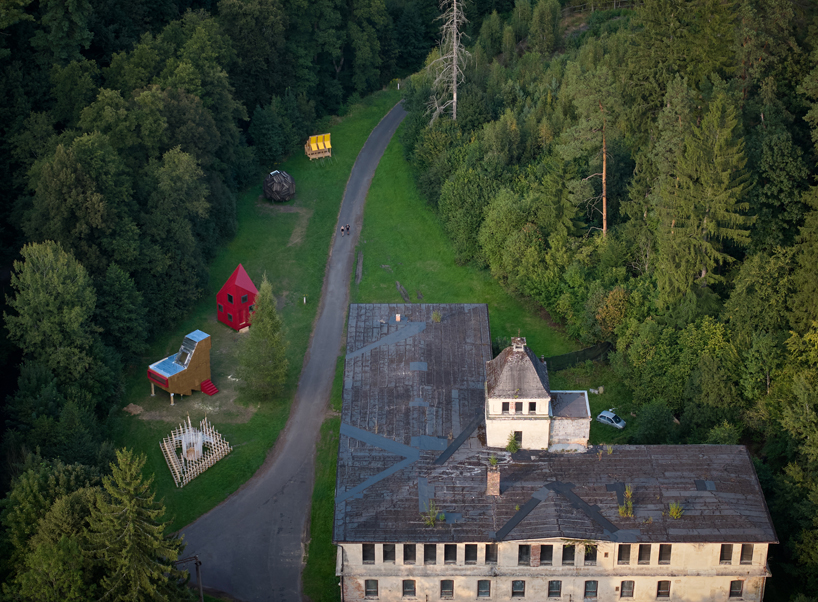
all images by BoysPlayNice
Hello Wood promotes hands-on architectural education
Founded in 2010, Hello Wood is a Hungarian architecture studio recognized for its emphasis on hands-on learning and community-based projects. Cabin Fever summer school and festival extends this approach internationally, merging architectural education with socially oriented design. The 2025 edition, developed in partnership with VELUX, focused on the role of light and spatial quality in shaping human interaction. The collaboration reflects a shared design philosophy between Hello Wood and VELUX, that architecture should integrate environmental responsibility, material awareness, and sensory experience. The program encourages participants to consider how built environments can generate meaningful social and spatial relationships through thoughtful use of structure, material, and light.
Held from July 23rd – July 31st 2025, the event was hosted in Česká Kamenice, a site of layered industrial and historical significance. Participants were invited to investigate the site’s physical and cultural context, translating it into architectural responses that address both memory and renewal. Students, emerging designers, and architects worked alongside established studios, including Arthur Mamou-Mani x FAB.PUB [UK], Geoffrey Eberle – Entropic [ES], Mjölk architekti [CZ], and Hello Wood [HU], to design and construct cabins and small-scale installations. Three winning proposals from an international open call were also realized during the workshop, expanding the dialogue between design, construction, and collective learning.
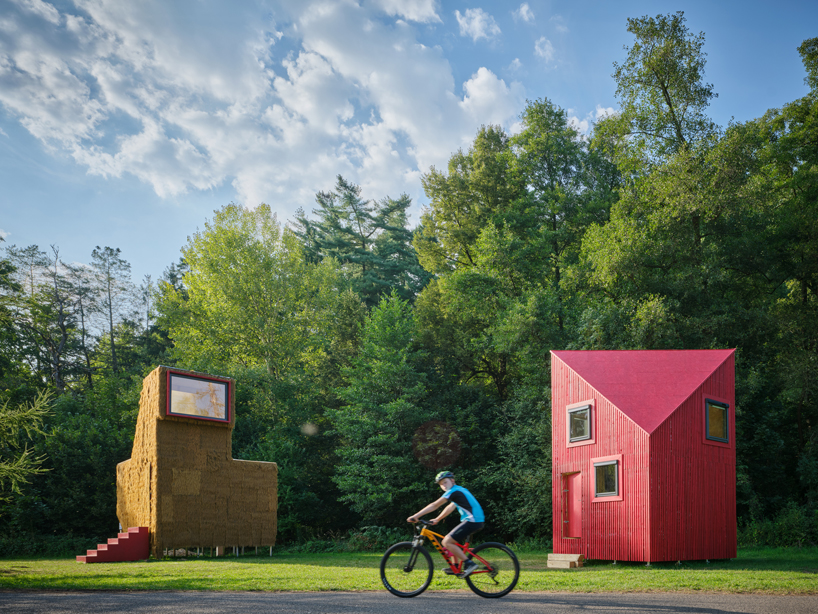
The Chicken and The Splinter
Hello Wood’s Cabin Fever 2025 lands in Česká Kamenice
Hello Wood’s arrival in Česká Kamenice follows the studio’s earlier initiatives in Csóromfölde, Hungary, where the Project Village program (2015–2017) transformed an abandoned rural site through collaborative building. Similar international workshops in Argentina and San Francisco later extended the model, reinforcing Hello Wood’s interest in connecting design education with site-specific cultural and environmental contexts. In partnership with local architects, Hello Wood identified Česká Kamenice as a location suited for a new cycle of long-term collaboration. The town’s historical background, natural setting, and local revitalization goals provided the foundation for the next three-year program. Through Cabin Fever, Hello Wood continues to develop a framework for architecture as a collective and situated practice, one that prioritizes cooperation, shared learning, and the capacity of design to foster social connection.
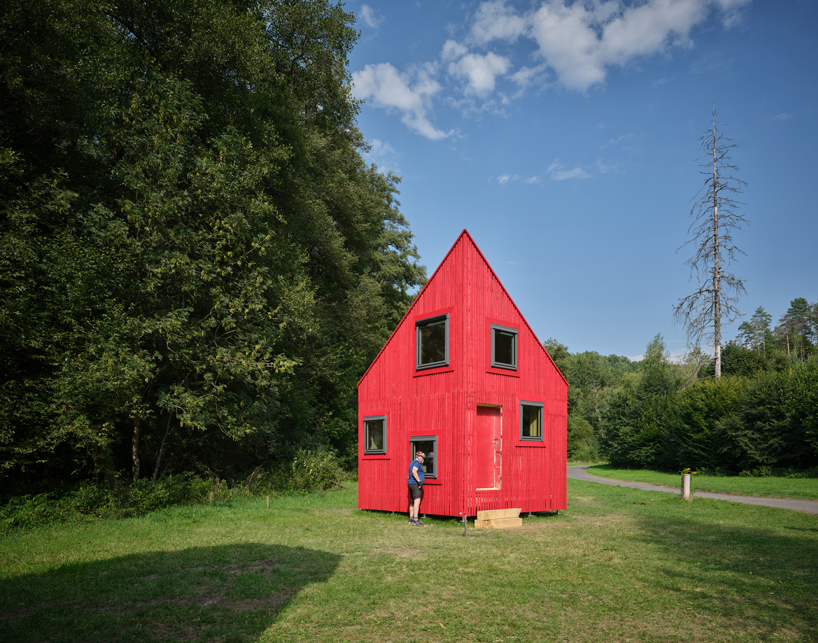
The Splinter
Eclosion
Eclosion invites visitors to connect to inner spaces and distant places. Like the warp and weft of woven fabric, this project recollects the complex histories of the site and interweaves them into a pavilion where people and place meet. The installation pulls inspiration from various layers of the site’s histories, textile craft, aerospace manufacturing, and the cocoon of the Meta menardi spider. Interwoven layers of natural and human history in one space. Upon visiting this site, the audience is constantly being woven through the fabric of space and time, becoming part of the ever-changing fabric of the site, emerging transformed, an eclosion of new perspectives and shared memories.

The Chicken
The Chicken
The Chicken, a playful yet functional structure, reimagines one of the world’s most familiar birds as both shelter and observation point. Designed to reflect the life of the forest’s birds, it invites visitors to lie back inside its chicken-shaped neck, using an internal mirror to watch the canopy and nesting birds in comfort. The moss-covered exterior doubles as a living habitat for insects and birds, merging architecture with nature. Its whimsical form is a reminder that design is not only about straight lines; it can also bring joy, curiosity, and a deeper connection to the world around us.

Eclosion, The Chicken, and The Splinter
The Splinter
Like a piece of wood that’s broken off from the forest itself, this slender, vertical cabin stands sharp and distinct among the treetop canopies. From the outside, The Splinter shows a bold, spiky character, unique and striking against the natural backdrop. But step inside, and it reveals a warm, inviting space designed to bring people together, where natural materials and cozy design create the perfect setting for quality time. On and above the ground, this sheltered retreat balances solitude and connection, ruggedness and comfort, offering a place to unwind, share stories, and truly connect with both nature and each other.

Eclosion
Živa
Like a seed stirring beneath the forest floor, Živa awakens as a living pod where nature and learning meet. Its intricate geometric form mirrors the balance and harmony found in the wild, while its mossy surroundings invite quiet reflection. Step inside, and the space transforms into a classroom in the trees, a warm, collaborative haven where ideas take root. Živa is more than shelter; it’s a shared act of creation, a symbol of growth, and a place where people, craft, and nature flourish together.
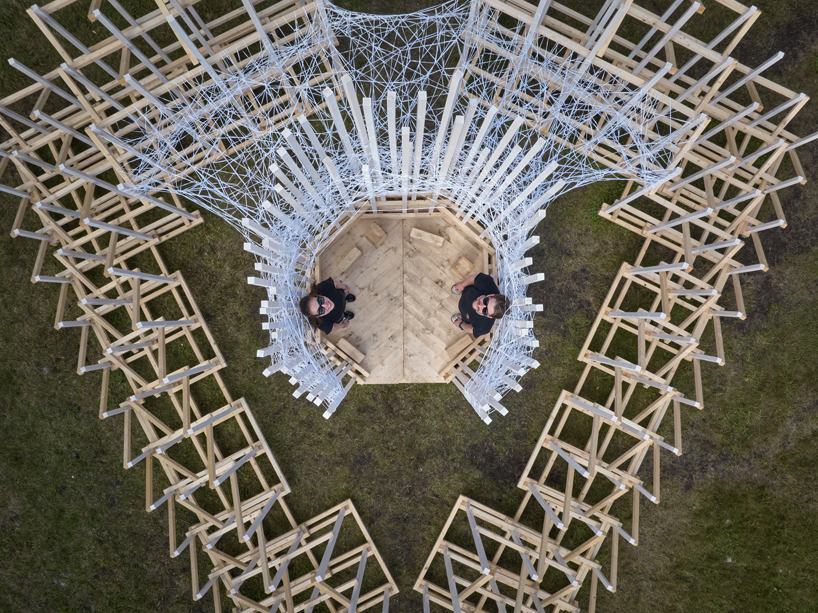
Eclosion
LOOM
LOOM pays tribute to the site’s textile-making heritage, reimagining the mechanics of a loom in architectural form. Vertical timber columns and horizontal beams echo the warp and weft of woven fabric, while stretched textile threads create a raised platform for rest and reflection. Set on the grounds of a former factory, LOOM becomes both shelter and symbol, a tactile reminder of craft, memory, and transformation.
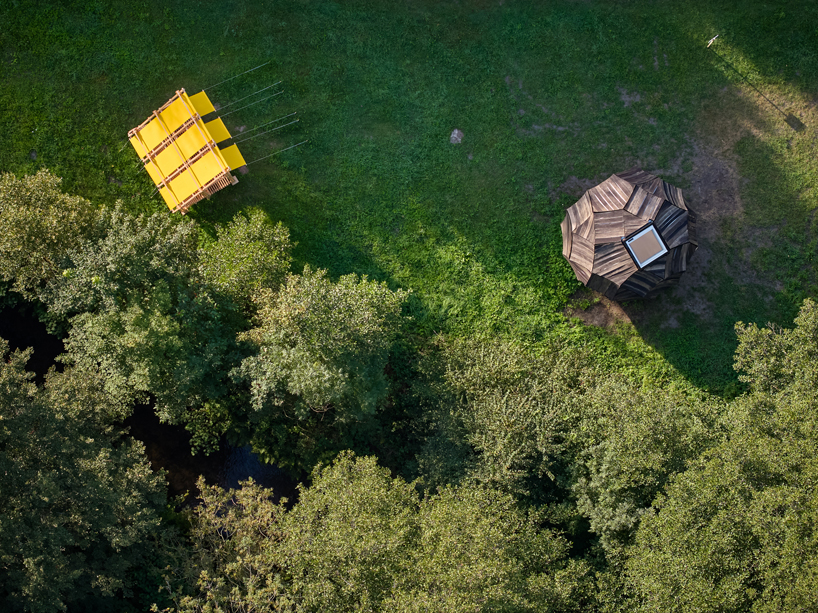
LOOM and Živa

Živa
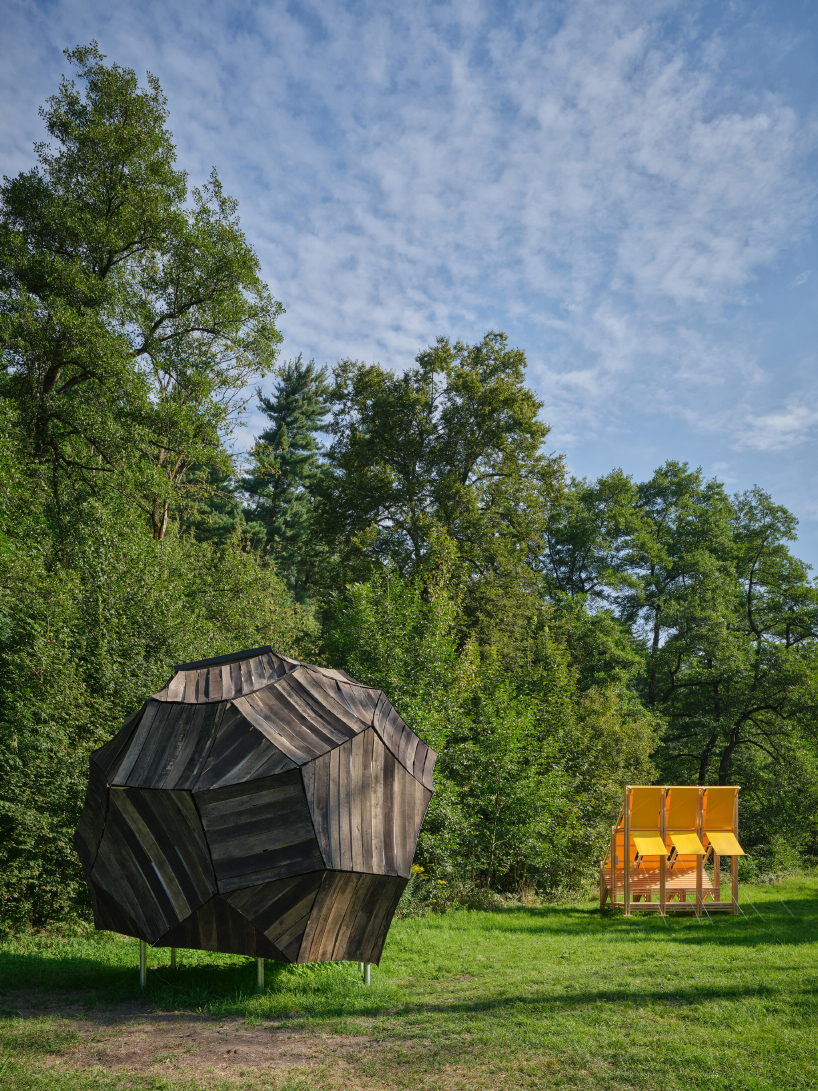
Živa and LOOM

